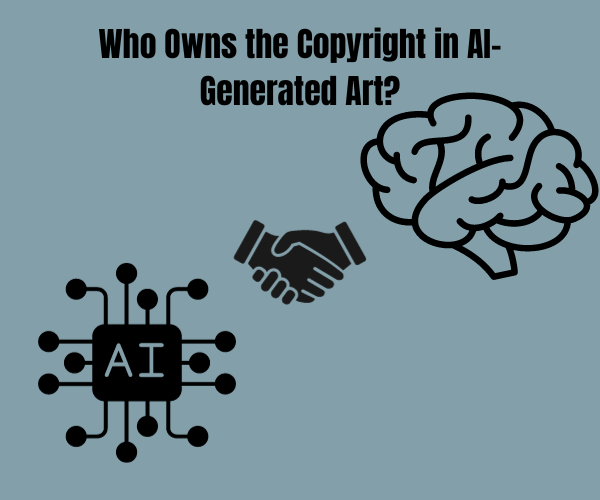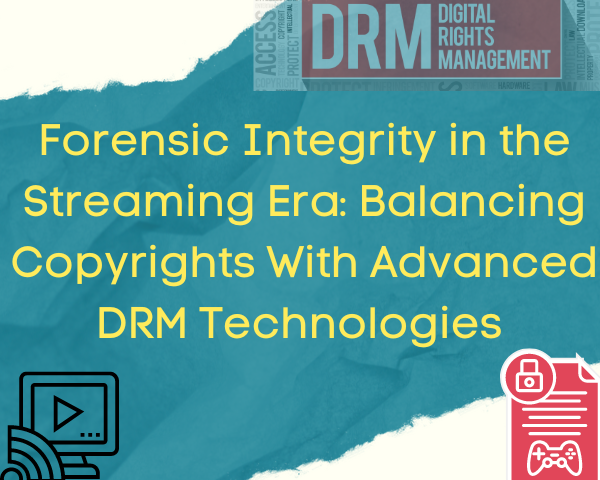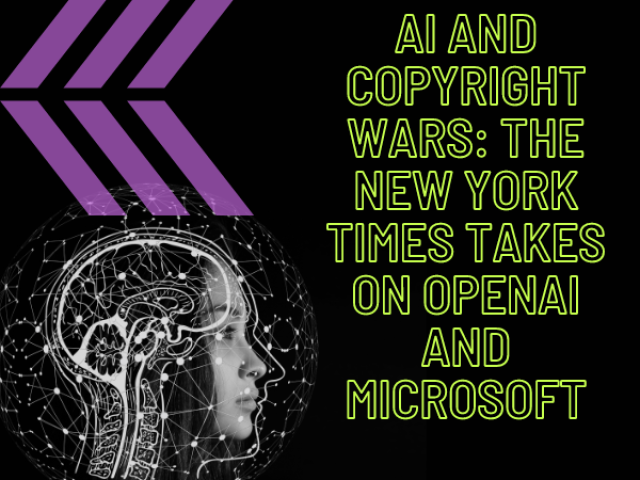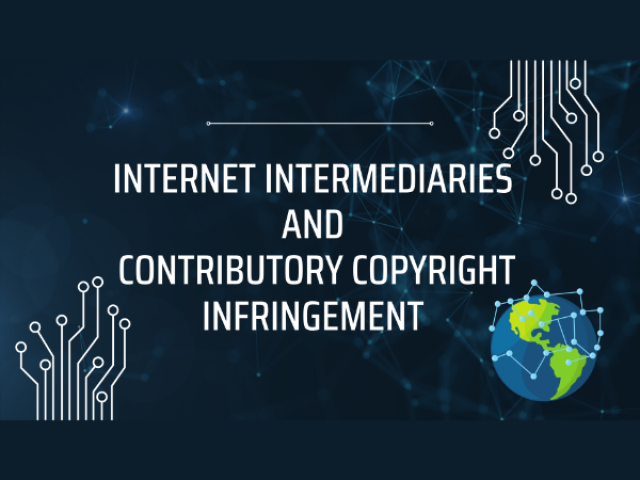Introduction
In the ever-evolving intersection of technology and creativity, a groundbreaking revolution is underway – AI-generated art. This burgeoning genre is not only pushing the boundaries of artistic expression but also challenging the established norms of copyright ownership. In a world where algorithms wield the paintbrush and pixels dance to the rhythm of machine learning, who owns the rights to these creations? This blog post embarks on a comprehensive journey to unravel the complex issue of copyright ownership in AI-generated art. We will delve into the genesis of AI art, explore the legal and ethical dilemmas it poses, and discuss the potential future scenarios that lie ahead.
AI-Generated Art: Where Artistry Meets Algorithms
Before diving into the intricacies of copyright registration/ownership, let’s set the stage by understanding the birth of AI-generated art. At the core of this creative revolution are algorithms, particularly deep learning models like Generative Adversarial Networks (GANs) and neural networks. These algorithms analyze colossal datasets of existing art, music, literature, or other forms of creative content to learn patterns and generate original works. AI-generated art represents a fusion of human ingenuity in crafting algorithms and the machine’s ability to produce artworks autonomously. To delve deeper into the question of ownership, we need to grasp the traditional concept of copyright. Copyright laws are designed to safeguard the rights of creators. When individuals invest their time, skill, and imagination into producing original content, they are granted exclusive rights to reproduce, distribute, display, and financially benefit from their creations. Historically, these rights have been attributed to human creators, forming the cornerstone of copyright law.
The Creator’s Conundrum: Defining Authorship in the Age of AI
The emergence of AI-generated art introduces a fascinating paradox, commonly referred to as “The Creator’s Conundrum.” When AI systems autonomously generate art, who should rightfully be considered the author or creator? Is it the human programmer who crafted the algorithm, the owner of the AI system, or can the AI itself claim authorship? This pivotal question challenges our understanding of authorship and ownership in the digital age. To navigate this complex issue, it is essential to explore the current legal frameworks governing AI-generated art. Copyright laws and intellectual property regulations vary from one jurisdiction to another, leading to inconsistencies in how AI-generated content is treated. Some countries recognize the human programmer or AI owner as the rightful copyright holder, while others grapple with attributing authorship to AI. This diversity of approaches adds a layer of complexity to the already intricate landscape of AI art copyright.
Challenges and Controversies in AI Art Copyright Cases
AI art has raised several challenges and controversies, particularly in the realm of copyright. The absence of a traditional human author, the complex attribution of copyright, and the use of pre existing data and training, raises questions about the ownership of the AI art. Some argue that AI art lacks true originality and creativity, leading to debates about whether it should be eligible for copyright protection or if it should be considered a mere replication of existing content. Additionally, AI art can sometimes produce works that closely resemble existing copyrighted art, leading to allegations of copyright infringement. The rapid evolution of technology and legal frameworks further complicates the issue, with ethical concerns surrounding AI art and the potential devaluation of human creativity and labour.
The number of case laws that can be used as a precedent in these cases are very few in number, as the legal structure as well the outlook towards AI art is reforming with time. One of the landmark cases that highlighted the grey area of copyright law with respect to art generated by AI or without the help of human touch is that of Naruto v. Slater, 16-15469, popularly known as the Monkey selfie case.
In 2011, wildlife photographer David Slater captured a monkey selfie, which gained widespread attention online. The monkey, Naruto, was the subject of a lawsuit filed by PETA, the People for the Ethical Treatment of Animals, claiming he was the rightful copyright owner. The case faced initial dismissal due to the U.S. Copyright Office’s guidelines, but a settlement was reached in 2018. The case highlighted the legal ambiguity surrounding copyright ownership in novel situations, the complexity of animal rights, and the influence of photography and social media on wildlife conservation. The settlement sidestepped the core question of Naruto’s copyright ownership and avoided setting a legal precedent. The case also highlighted the need for greater clarity in copyright law regarding AI-generated and non-human creations. While the case did not definitively resolve the issue of whether non-human animals can own copyright, it prompted discussions about the intersection of copyright law, animal rights, and technology.
A few other case laws that highlights the relation of AI generated and Copyright:
- The “Portrait of Edmond de Belamy” Case (2018): In 2018, the artwork titled “Portrait of Edmond de Belamy” was created using a machine learning algorithm by the Paris-based art collective Obvious. This AI-generated portrait sparked discussions about copyright because it raised questions about the authorship of the work. While no legal case was filed, it served as a notable example of AI-generated art and its relationship with copyright.
- Mario Klingemann’s AI Artworks: Mario Klingemann, a well-known AI artist, has produced various AI-generated artworks. Some of his works have been sold as NFTs (Non-Fungible Tokens). These sales and the associated questions about copyright ownership and intellectual property have brought attention to the evolving legal aspects of AI art.
The Future of Copyright in AI-Generated Art
As we stand at the precipice of a new era in creative expression, the future of copyright in AI-generated art remains uncertain and intriguing. Legal experts, artists, technology innovators, and policymakers are actively engaged in debates and discussions to chart the path forward. Potential solutions range from creating new categories of copyright to developing specialized licensing models for AI-generated content. The need for international standards to ensure consistency in copyright treatment across borders is also gaining momentum.
Ethical Considerations
Beyond legal frameworks, ethical considerations play a crucial role in shaping the future of AI art copyright. Questions about transparency in AI art creation, informed consent, and the potential exploitation of AI-generated content challenge our moral compass. Ethical guidelines are being developed to ensure responsible AI-generated art that respects both human ingenuity and the evolving role of machines in the creative process. Artists’ moral integrity is compromised as the AI art tools’ creations are derived from programmed images of millions of artists whose works are subject to copyright protection. Furthermore, these AI tools have implemented strict conditions that the images are not the user’s property, thus no intellectual property rights may be asserted, and the images remain in the public domain, thus eliminating the possibility of copyright protection.
Conclusion: Charting a Responsible Path Forward
The question of who owns the copyright in AI-generated art is a multifaceted issue that transcends the boundaries of law and ethics. It is a question that speaks to the heart of our evolving relationship with technology and creativity. As AI-generated art continues to gain prominence, striking a balance between protecting the rights of human creators, fostering innovation, and acknowledging the evolving role of AI is imperative.
The future of AI art copyright will be defined by legal adaptations, ethical considerations, and a collective effort to navigate the complexities of this brave new world of artistry. Ultimately, the answers to these questions will shape not only the world of AI-generated art but also our broader understanding of creativity and authorship in an increasingly AI-driven world.




